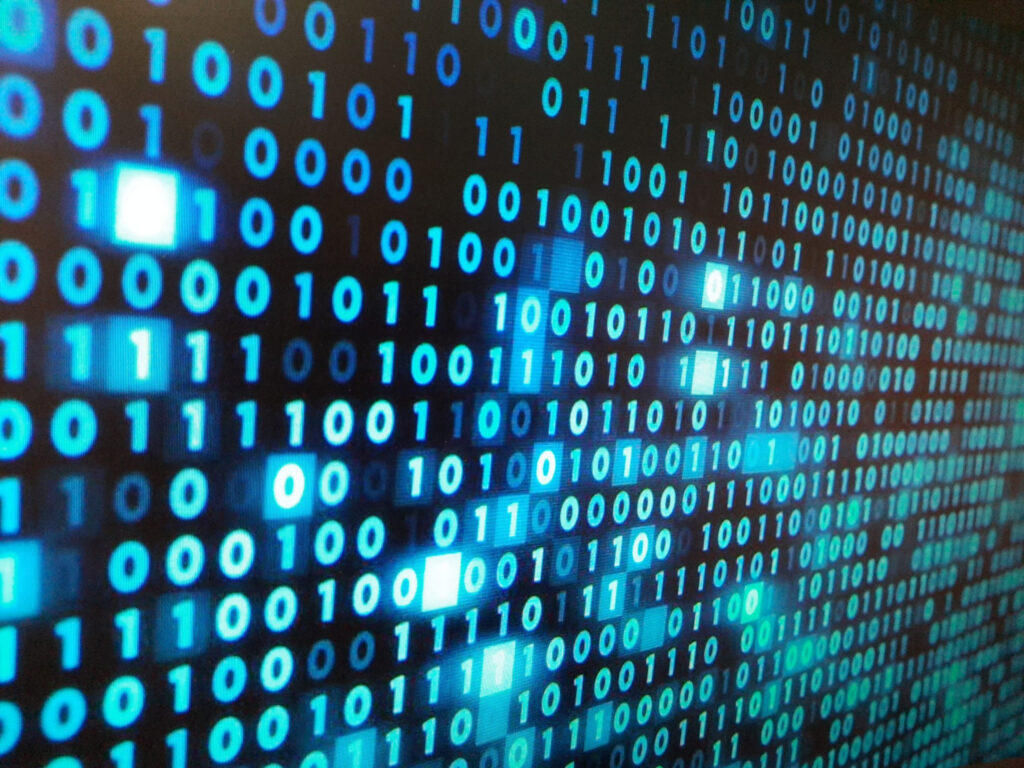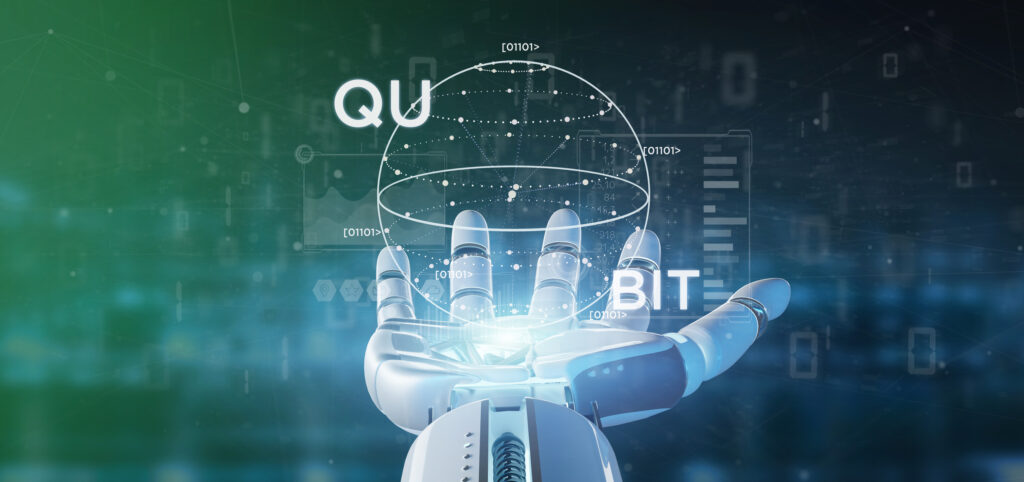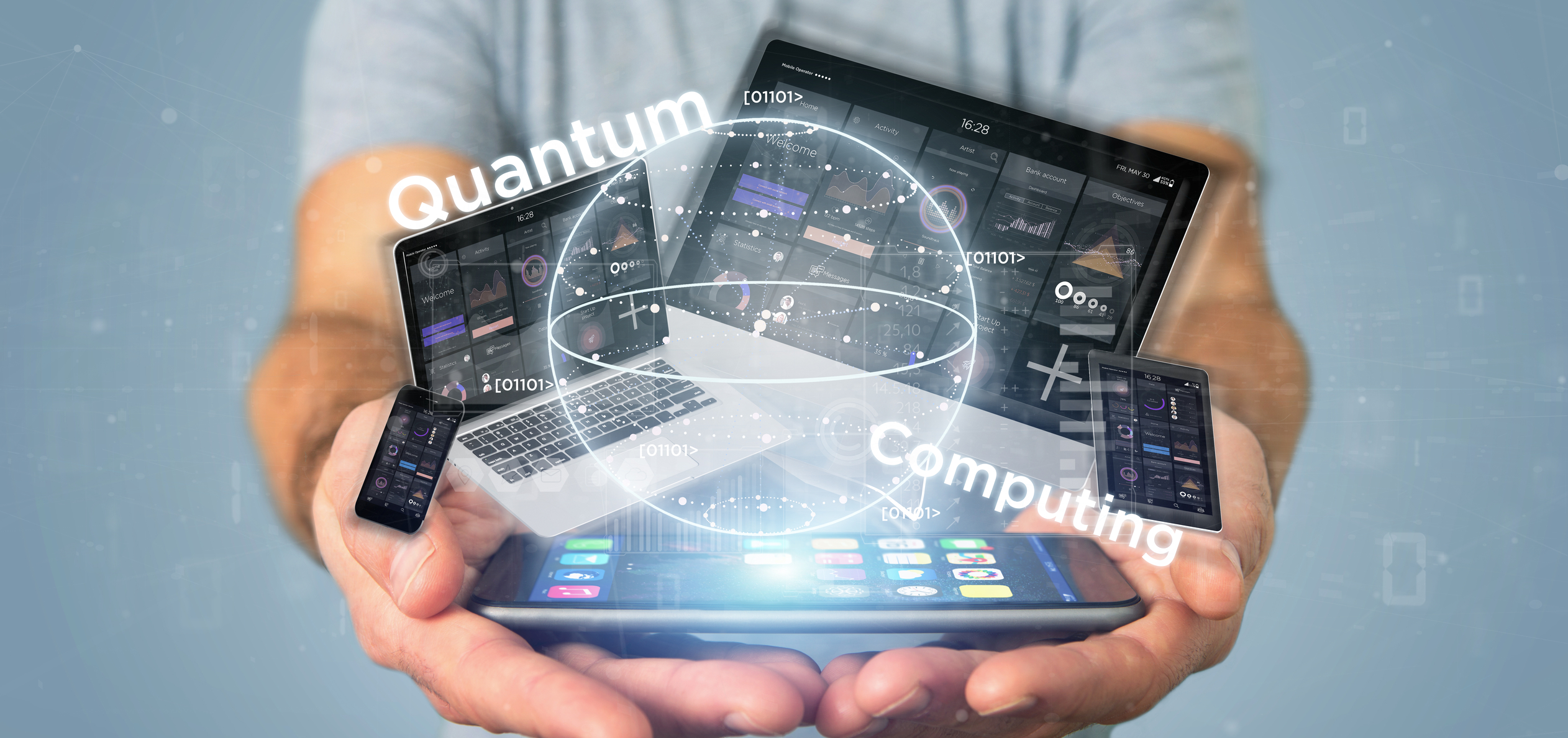Fans of science fiction will quickly recognize the term “quantum” as a concept that allows for fantastic technological inventions. We imagine multiple dimensions existing simultaneously, or objects that can disappear and reappear instantaneously in a different place. And so when we hear the term “quantum computer,” it doesn’t seem real.

But of course, quantum computers are real. They’re being tested and developed right now and, one day, may be the computers of the next generation.
So what is a quantum computer? What are quantum computers used for? How do they work?
This blog post is a mere entry into explaining the world of quantum computers. We’ll introduce you to the topic simply so you have a basic understanding if you decide to research more into the topic on your own.
Our post breaks the question of “what is a quantum computer” into two parts:
- What is a computer, and how does it work?
- What does “quantum” mean?
What Is a Computer? (Yes, Really, We’re Starting Here)
Computers, like the one that you’re using to read this blog post, operate by interpreting information very, very quickly. When you think about human communication, language is the best method that we use to transfer and interpret information. You can read written text or listen to someone talk and understand the meaning of their words in a fraction of a second if you’re fluent in that language.
But is a half or a quarter of a second really that fast? And, someone has to take the time to write or say something for that information to be conveyed.
Bits
Computers have a much more efficient way of storing, transferring, and interpreting information in the form of “bits.”
A “bit” is the most basic unit of information that a computer uses. It’s a binary digit: Either a “1” or a “0”. True or false. Yes or no. On or off. Alone, a bit can’t transmit very much information. But grouped together, bits can represent more complex information and be manipulated at very high speeds.
Bits are controlled by electrical signals and grouped together in “bytes” to transmit information. A “byte” is 8 bits in a row. These 8 bits can have 256 different possible combinations, with just each bit representing either 1 or 0.

Computers have thousands, hundreds of thousands, even millions of bits working simultaneously to perform the regular functions that you use every day. You may recognize the words “megabyte” (roughly one million bytes) or “gigabyte” (roughly one billion bytes) in computer jargon. Think of how much information could be stored in a terabyte (one thousand gigabytes)!
Qubits
Quantum computers are unique in that they don’t just use bits. They use something called a “qubit.”

Photo 135550772 | Qubit © ProductionPerig | Dreamstime.com
A qubit is similar to a bit in that it has a “0” and “1” state but, unlike a bit, it can be both of these values at the same time. Qubits inherit many other properties of quantum objects that cause them to process information far faster than classic computers that use bits. Qubits are also unique in that they’re not stored within the hard drive disk or RAM of your computer. We’ll get to the physical manifestation of a quantum computer later. For now, let’s briefly cover quantum mechanics …
“Quantum” explained simply
The simplest definition of quantum mechanics is the theory of our world below the scale of atoms. If physics is about understanding the atoms that make up the world around us, quantum mechanics is understanding what makes up those atoms.
We mentioned the properties of quantum objects before. Let’s explore these a bit more.
Superposition
Quantum superposition describes the ability for objects to exist at two different states simultaneously. Definitely a mind-numbing concept in itself! Caltech gives a good simple example in the form of the algebraic equation:
X2 = 4. In this example, both 2 and -2 are correct values for X. In the same way that both of these values are correct and valid. In a sense, the value of “X” in this equation exists as both -2 and 2 simultaneously. While not necessarily quantum, this is the mindset we need to understand quantum mechanics.
Quantum particles can be in a state of superposition until they are measured, or observed. Just like how the X represents both, once we assign it a “2” or “-2” value, it’s no longer in a state of superposition.
Entanglement
Entanglement refers to the ability for two particles to be linked together, regardless of distance. In quantum physics, if one of these particles is “modified” in some way, the other particle will be similarly modified. Caltech builds off superposition in a simple example involving two quantum objects:
Imagine two quantum entangled apples that are in a state of superposition. In other words, these apples are two values at the same time. In this example, these apples are both the color yellow and red at the same time.
If you look at one of these apples, it will no longer be in a state of superposition: It will now be just red. Because these apples are entangled, the other apple will also react and now only be in a “red” state.
What is Quantum Computing?
Quantum computing uses qubits, particles with quantum properties that can still act as bits, to operate a computer. Quantum particles like electrons, photons, or certain low temperature materials can have quantum properties and be assigned either a “0” or “1” state to calculate complex problems just like a computer does.
The University of Waterloo gives the example of an electron. Electrons are bound to atoms but freely rotate around them. Because electrons rotate very fast, they can be said to exist in a range of different positions depending on how energized they are. Electrons can be said to exist within a low energy state or a high energy state. Electrons can have their energy states excited with lasers and assigned a qubit value based on this energy state (0 = low energy, 1 = high energy).
The quantum properties of electrons are therefore transferred to a computer as a qubit. Just like with bits, multiple qubits together would then be able to perform complex calculations simultaneously in a fraction of the time a bit-based computer would take.
Who Has a Quantum Computer?
Currently, no known company has a fully working quantum computer. Several tech giants like IBM, Google, and Amazon have invested a lot of money into developing quantum computers to perform complex calculations like machine learning more quickly. The recent popularity of artificial intelligence may drive further research into quantum computers. (For a list of quantum computing companies, see The Quantum Insider’s 2023 list.)
However, for now, real quantum computing is purely theoretical. This is mostly because of the difficulty of creating a practical environment where qubits can perform necessary functions without any outside interference. Because qubits operate on the atomic level, they’re susceptible to outside interference like radiation, temperature, and electrical fields that are very difficult to get rid of. Scientists are still researching creating ideal environments for quantum computers, so there aren’t excessive errors.
However, quantum computing remains to be an exciting piece of future technology that may one day find its way into our daily lives. Quantum computing may be considered a risky investment due to its impossible-to-predict the timeline of implementation, but many large companies are investing in its research to make a more efficient computer of tomorrow.
Resources to Follow for Quantum Computing Geeks
In addition to Caltech and University of Waterloo, here are resources to follow if you want to stay on top of the latest in quantum computing news.










 Share On Twitter
Share On Twitter